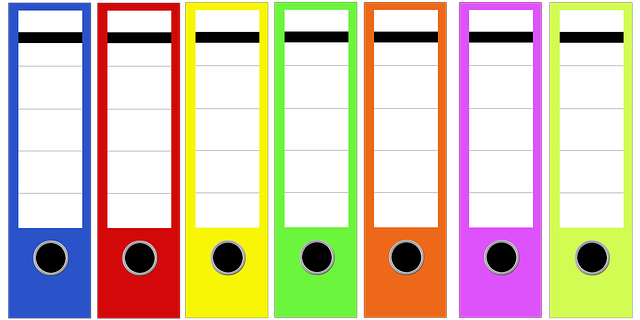Missed call automation software is a powerful tool for businesses to capture and respond to potential leads instantly. It offers real-time alerts, routes calls to appropriate departments, and provides multiple communication channels for prospects. This technology enhances customer satisfaction, optimizes support, and drives sales through efficient lead management, making it crucial for modern business success.
In today’s fast-paced world, real-time communication is crucial for businesses. Missed call automation software tools offer a powerful solution by providing instant alerts and capturing valuable customer interactions. This article delves into the intricacies of missed call automation software, exploring its key features, benefits for both businesses and customers, implementation steps, and how to choose the right tool for your specific needs. Understanding this technology can revolutionize your customer engagement strategies.
- Understanding Missed Call Automation Software
- Key Features of Real-Time Alert Tools
- Benefits for Businesses and Customers
- Implementing Missed Call Systems: Step-by-Step
- Choosing the Right Software for Your Needs
Understanding Missed Call Automation Software

Missed call automation software is a powerful tool that enables businesses to transform missed calls into actionable opportunities. This technology captures incoming calls that go unanswered and routes them to automated systems, allowing for immediate responses. By implementing this software, companies can efficiently manage customer interactions, especially in fast-paced environments where quick turnaround times are crucial.
For instance, in the context of an ecommerce solution or sales funnel, missed call automation can capture potential leads who reach out but don’t get connected. The software then triggers pre-recorded messages, offering alternatives like leaving a voicemail, sending an email with relevant information, or even scheduling a callback at the customer’s convenience. This not only ensures no lead is left unattended but also enhances the overall marketing automation strategy by nurturing prospects through various touchpoints.
Key Features of Real-Time Alert Tools

Real-Time Alert tools are a crucial component of modern business operations, offering efficient solutions through missed call automation software. These tools empower businesses to instantly respond to customer interactions, enhancing overall communication effectiveness. Key features include automated callbacks, where the system contacts customers within seconds of their initial attempt to reach an unavailable representative, minimizing frustration and increasing customer satisfaction.
Additionally, these platforms often integrate AI chatbots on landing pages, providing immediate support even outside regular business hours. This feature is particularly useful for email marketing campaigns, as chatbots can handle basic queries, allowing businesses to focus on more complex issues. By leveraging missed call automation software and AI technology, companies can streamline their customer service processes, ensuring prompt responses and fostering stronger relationships with clients.
Benefits for Businesses and Customers

For businesses, real-time alerts powered by missed call automation software tools offer a multitude of benefits. These solutions enable immediate response to customer inquiries, enhancing operational efficiency and significantly improving customer satisfaction. By automatically capturing and routing missed calls to the appropriate departments or personnel, companies can reduce response times, ensuring that no potential lead or support request goes unnoticed. This not only boosts business productivity but also fosters stronger customer relationships by providing prompt assistance.
Customers stand to gain from this technology in several ways. They experience faster resolution to their queries and issues, leading to an enhanced overall service experience. Moreover, missed call automation can integrate seamlessly with existing customer relationship management (CRM) systems and AI chatbots, offering a more personalized and comprehensive support ecosystem. This combination of swift responses and advanced digital assistance significantly increases customer loyalty and satisfaction levels.
Implementing Missed Call Systems: Step-by-Step

Implementing missed call systems is a strategic move for any business aiming to enhance customer engagement and streamline operations. Here’s a step-by-step guide on how to integrate this powerful tool into your communication strategy, leveraging missed call automation software:
1. Assess Your Needs: Begin by understanding your primary goals. Are you looking to improve sales through quick response times, enhance customer support, or both? This will dictate the features and functionalities required in your chosen missed call automation software. For instance, if your focus is on marketing, consider tools that allow for personalized missed call text backs, enabling you to deliver tailored messages to prospects.
2. Select the Right Software: The market offers a wide array of options, from basic to advanced packages. Evaluate each based on features like automated answering, custom messaging, real-time analytics, and integration capabilities with your existing Customer Relationship Management (CRM) system or marketing automation platform. A robust solution should seamlessly fit into your workflow, enabling efficient management of missed calls and potential leads.
3. Configure Settings: Once selected, set up the software to align with your business requirements. Customize greetings, define call routing rules, and create templates for different scenarios. For instance, you can program the system to automatically forward missed calls to a specific department or agent based on the caller’s input or the time of day.
4. Test and Optimize: Before full-scale deployment, conduct thorough testing. Make test calls to ensure the system functions as intended. Analyze call data to identify areas for improvement, such as refining message templates or adjusting call distribution strategies. Regularly reviewing and optimizing your missed call automation process will help maximize its effectiveness.
Choosing the Right Software for Your Needs

When selecting a missed call automation software tool, it’s essential to align your choice with your specific business needs. Each company has unique requirements for real-time alerts and communication strategies, so evaluating potential tools based on features, scalability, and integration capabilities is paramount. Look for solutions that offer customizable automation workflows, allowing you to tailor responses to various scenarios, from simple greetings to complex lead capture systems.
Beyond core functionality, consider the software’s impact on your reputation management strategy and its compatibility with existing marketing channels like email marketing and CRM platforms. A reputable tool should seamlessly integrate with your workflow, ensuring smooth data exchange and consistent branding. This integration can empower you to nurture leads more effectively through targeted email campaigns, while CRMs can help track interactions initiated via missed call automation, providing a holistic view of customer engagement.
Missed call automation software has transformed how businesses interact with their customers, offering real-time alerts and efficient communication. By implementing these tools, companies can enhance customer service, reduce no-show rates, and improve overall operational efficiency. With the right software, such as those discussed in this article, businesses can leverage missed calls as valuable data points to drive growth and better serve their clients.
